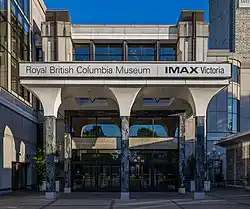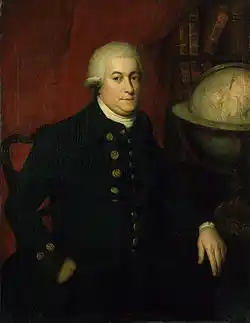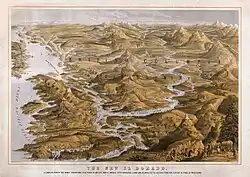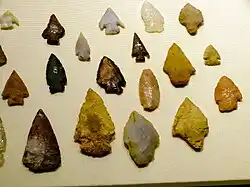
The Royal British Columbia Museum is a museum and resource center in the city of Victoria in the province of Columbia in western Canada. It was first founded in 1886 and runs both a series of permanent and temporary exhibitions showcasing the history of British Columbia since prehistoric times. Elements of its collections focus on the settlement of the region in the eighteenth, nineteenth and twentieth centuries and so the museum has a genealogical dimension to it. Furthermore, in 2003 it merged with the British Columbia Provincial Archives and so the Royal BC Museum now has a considerable archive of material that can be used when tracing a person’s family history in the province of British Columbia or western Canada more generally.[1]
Research your ancestors on MyHeritage
History of British ColumbiaHistory of British Columbia

British Columbia is an administrative region today, but it also has a geographical coherence, being defined by the Pacific Ocean to the west and running east to the Rocky Mountains. Its southern and northern borders are more arbitrary, with the southern border being fixed between British Canada and the United States along the 49th parallel of latitude owing to political developments far to the east of British Columbia itself. The region has been settled since around 8000 BCE, being one of the first areas settled in North America owing to its proximity to the Bering Straits that were used by Homo sapiens to cross over from Eurasia into North America. Some of the First Nations peoples who lived there in pre-colonial times, many of which are the focus of exhibitions at the Royal BC Museum, include the Coast Salish[2] people and the Haida.[3]
The western coast of North America was a contested region in the second half of the eighteenth century and into the early nineteenth century, with Spanish and British explorers like George Vancouver charting the coastline here between the 1770s and 1790s, while the famous expedition of Meriwether Lewis and William Clark between 1804 and 1806 staked the claim of the United States to the western parts of the continent.[4] In the end, though, the British claim won out and British and Canadian colonists began settling here in the 1840s. Fort Victoria, named after Queen Victoria of Britain, was one of the first major settlements. This was the basis for the future city of Victoria where the Royal BC Museum is found today. Victoria remains the provincial capital, despite being eclipsed as the major urban center in British Columbia by Vancouver long ago.[5]

The major stirring of British/Canadian settlement in British Columbia began from the late 1850s as news of gold discoveries in places like Fraser Canyon brought people west from the more settled parts of British Canada and north from places like California where the gold rush that had begun there in the late 1840s was coming to something of an end. The Colony of British Columbia was established as an official political and administrative entity in tandem in 1858.[6]
The disparate colonies here were joined together in 1866 and in 1871 they joined the Canadian Confederation which had been initially established in 1867 as the forerunner of the modern state of Canada. British Columbia became the seventh province to join after Ontario, Quebec, Nova Scotia, New Brunswick, Manitoba and the Northwest Territories.[7] Today British Columbia is one of the most significant provinces of Canada, with over five million of the country’s 38 million people living here. Over half of these live in the wider Vancouver metropolitan area, though Victoria retains an importance as the provincial capital and the center of heritage sites such as the Royal British Columbia Museum.[8]
The Royal British Columbia MuseumThe Royal British Columbia Museum
The Royal British Columbia Museum dates back to 1886 when it was established in what was then the town of Victoria. An archive was established in Victoria as well in 1894, though the museum and archives remained separate entities until the archives were amalgamated into the museum in 2003. The ‘Royal’ name was granted to what had been simply the British Columbia Museum after a royal visit by Queen Elizabeth II and her husband, Prince Philip, in 1987, just after the centenary celebrations of the museum’s founding.[9]

There are three permanent exhibitions or galleries within the museum itself. The first of these focuses on the prehistory, geology and geography of the British Columbia region. The second is a collection on the colonial history of British Columbia, from the first arrival of European explorers here in the eighteenth century, through the initial settlements, the gold rushes, the establishment of British Columbia as a political entity and its gradual absorption into Canada. Finally, the third exhibition charts the history of the Native American people of south-western Canada, the First Peoples. There is also a rotating program of temporary exhibitions on various topics, not all of which specifically relate to British Columbia.[10]
Genealogical material and the Royal BC MuseumGenealogical material and the Royal BC Museum
The Royal BC Museum holds a very large volume of records pertaining to the history of British Columbia. A large amount of this is of use for family historians and genealogists. For instance, local and national census records dating back as far as the 1820s and 1830s are available in either the original, on microfilm or online. Extensive records and crown land leases and indexes, along with government records are housed here, primarily from the 1850s onwards. Going back further there are army list records from as early as 1789, while a very considerable range of records are available from 1859 onwards once the gold rush started large scale settlement in the region.[11] Search guides are available on the museum’s website for several classifications of documents, including First Nations genealogical research and general genealogical guides. MyHeritage has nearly two million records concerning births, marriages and death in British Columbia going back to 1773.[12]
See alsoSee also
Explore more about British ColumbiaExplore more about British Columbia
- Canada, British Columbia Births and Baptisms records collection on MyHeritage
- Canada, British Columbia Marriages records collection on MyHeritage
- Canada, British Columbia Deaths records collection on MyHeritage
- Canada, British Columbia, Vancouver Mountain View Cemetery records collection on MyHeritage
- Canada, Newspapers 1752-2007 records collection on MyHeritage
- 1871 Canada Census records collection on MyHeritage
- Genealogical Gold in British Columbia at Legacy Family Tree Webinars
References
- ↑ https://www.royalbcmuseum.bc.ca/
- ↑ https://www.amnh.org/exhibitions/permanent/northwest-coast/coast-salish
- ↑ https://www.haidanation.ca/haida-nation/
- ↑ https://www.thecanadianencyclopedia.ca/en/article/george-vancouver
- ↑ https://www.thecanadianencyclopedia.ca/en/article/fort-victoria
- ↑ https://goldrushtrail.ca/history/
- ↑ https://www.canadahistoryproject.ca/1871/
- ↑ https://vancouversun.com/news/metro-vancouver-projected-to-hit-three-million-residents-this-year
- ↑ https://www.royalbcmuseum.bc.ca/about/museum-information/about-museum
- ↑ https://www.royalbcmuseum.bc.ca/visit/exhibitions
- ↑ https://www.royalbcmuseum.bc.ca/sites/default/files/sites/default/files/images/genealogy_guide_2022.pdf
- ↑ https://www.royalbcmuseum.bc.ca/bcarchives/what-we-have/family-history-genealogy

